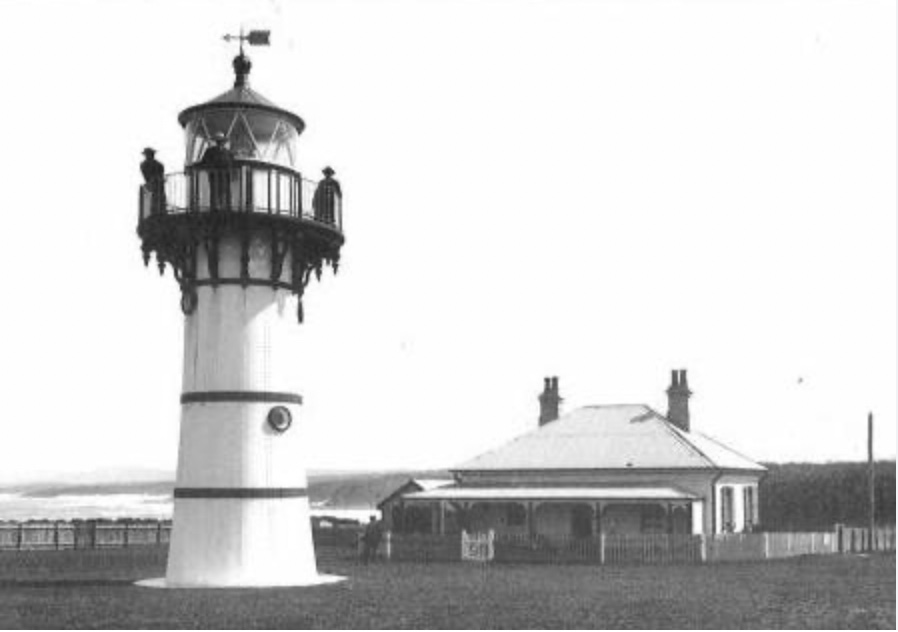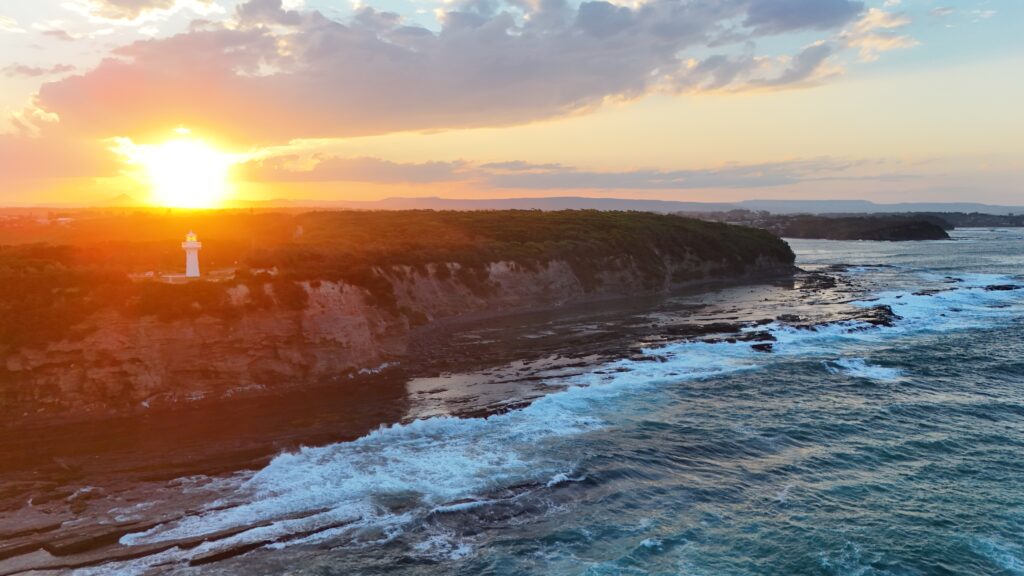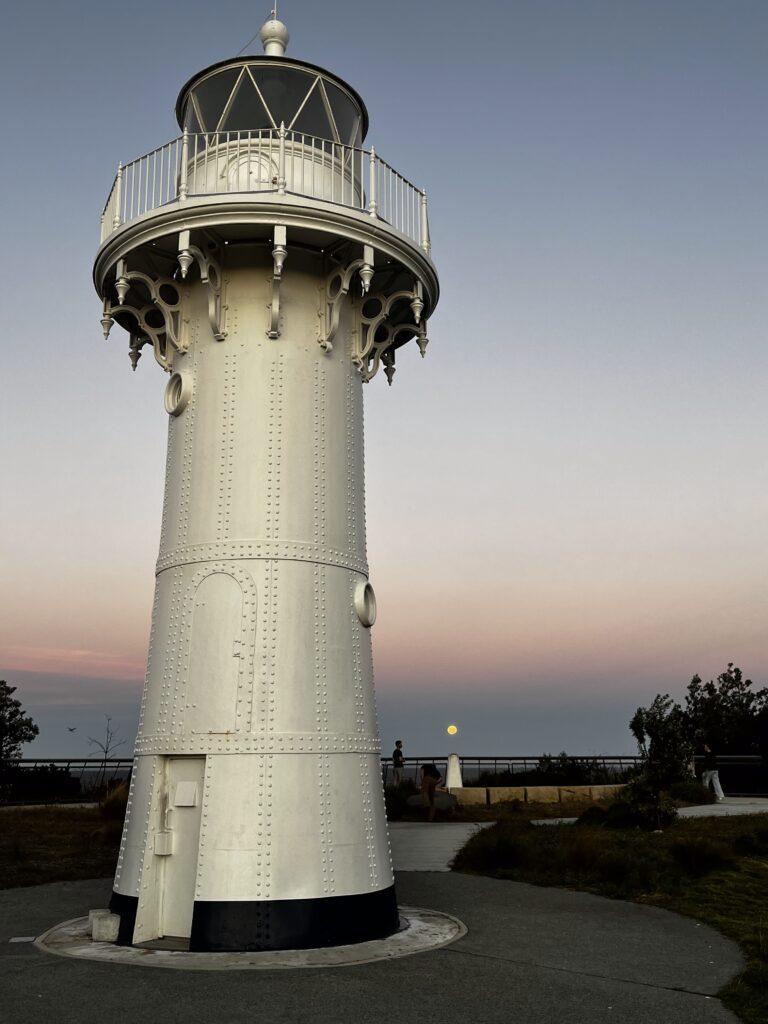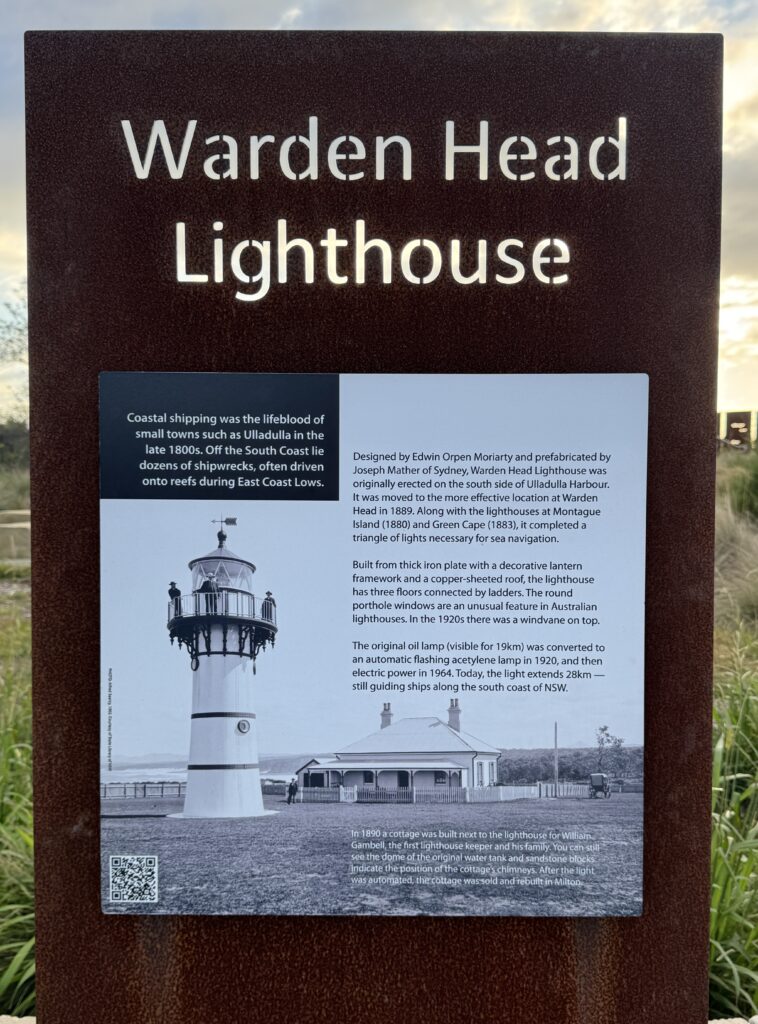
Standing on a dramatic headland at the southern entrance to Ulladulla Harbour, the distinctive white tower of Warden Head Lighthouse has guided mariners safely to shore for well over a century. This small but resilient beacon represents a unique chapter in Australia’s maritime heritage, a lighthouse that quite literally found a new purpose and place in life.
Unlike most of its counterparts along Australia’s coastline, Warden Head Lighthouse has lived two lives. Originally constructed in 1873 not as a coastal beacon but as a harbour light on Ulladulla’s breakwater, it was designed by colonial architect Edward Moriarty to guide vessels safely into the developing port. This first incarnation served the growing fishing and timber industries that were the lifeblood of the fledgling settlement.


After nearly three decades guiding ships into the harbour, a significant decision was made that would give this lighthouse its distinctive story. In 1889, maritime authorities determined that a light was more urgently needed at Warden Head to warn ships of the dangerous waters surrounding this prominent headland. Rather than construct an entirely new tower, the existing breakwater lighthouse—built of prefabricated wrought iron plates bolted together—was carefully dismantled, transported piece by piece to the headland, and reassembled at its new home approximately 800 meters from its original position.
This extraordinary relocation makes Warden Head one of the few lighthouses in Australia to have been successfully moved intact, a testament both to its modular construction and to the determination of the colonial engineers who undertook this challenging operation without modern lifting equipment.
Standing only 12 meters tall, Warden Head Lighthouse may lack the imposing stature of some of its coastal counterparts, but its brilliantly white cylindrical tower possesses a charm and elegance all its own. The prefabricated wrought iron plates that form its structure were an innovative engineering solution in the colonial era, allowing for relatively easy assembly and, as its history proved, occasional relocation.


The lighthouse’s design reflects the functional priorities of its time—the white exterior maximizes visibility against the often dark and stormy skies of the south coast, while its modest height is adequate for the high headland upon which it stands. From its base to the top of its distinctive lantern room, every element serves a purpose while contributing to the lighthouse’s striking visual appeal.
Originally powered by kerosene, the light was visible for approximately 15 nautical miles—sufficient warning for vessels navigating these waters. Technological evolution saw the lighthouse converted to acetylene gas in the early 20th century before finally being electrified in 1964, a modernization that allowed for automated operation.
For the lighthouse keepers who tended Warden Head’s flame, life combined splendid isolation with proximity to civilization. Unlike their counterparts on remote islands or distant capes, the keepers at Warden Head enjoyed the relative convenience of the nearby Ulladulla township. Yet their daily existence still demanded vigilance and dedication as they maintained the crucial light that kept mariners safe.
The keeper’s cottage, once standing near the lighthouse, provided a home where generations of lighthouse families experienced the unique rhythms of life dictated by the needs of the beacon. Children raised here grew up with the constant soundtrack of crashing waves and the responsibility of their family’s vital role in maritime safety.


Weather extremes tested both the lighthouse and its keepers. Powerful southerly storms would send spray high over the headland, while summer lightning storms sometimes required urgent attention to the lighthouse’s early electrical systems. Through fair weather and foul, the keepers maintained their watch, polishing brass, cleaning lenses, and ensuring that no ship would find itself without guidance along this treacherous stretch of coastline.
The waters surrounding Warden Head have claimed numerous vessels over the centuries. Before the lighthouse’s establishment, ships navigating the coastline had little warning of the dangerous reefs and rocky outcrops that lurked beneath the surface. Even with the lighthouse’s guidance, the unpredictable seas of the south coast occasionally proved overwhelming.
Local maritime history records numerous wrecks and near-disasters, from small fishing boats overwhelmed by sudden storms to larger trading vessels caught on submerged reefs. Each incident underscored the vital importance of the lighthouse’s unwavering beam, cutting through darkness and fog to provide mariners with crucial orientation.
One particularly notorious stretch near Warden Head became known colloquially as “Wreck Bay” due to the number of vessels lost there, though the lighthouse’s presence gradually reduced these tragedies over time. Still, older residents of Ulladulla recall stories of desperate rescues and heroic efforts by local fishermen to save mariners in distress within sight of the lighthouse.


Like many lighthouses, Warden Head has accumulated its share of legends and curious tales over its century-plus watch. Local folklore includes stories of mysterious lights seen moving around the headland on stormy nights—attributed variously to the ghosts of shipwrecked sailors or to the spirits of indigenous people who considered this headland a significant place long before European settlement.
Amateur paranormal investigators occasionally visit the lighthouse after dark, drawn by persistent rumors of unexplained phenomena. More verifiable are the accounts of extraordinary weather events witnessed from the lighthouse, including waterspouts forming offshore and lightning strikes that have occasionally damaged the structure itself.
One particularly persistent local legend involves a keeper who supposedly disappeared without trace during a violent storm in the early 1900s, though historical records neither confirm nor refute this tale. Whether factual or fictional, such stories have become part of the rich tapestry that makes Warden Head more than merely a navigational aid.
As maritime navigation technology advanced through the 20th century, the role of lighthouses fundamentally changed. The introduction of radar, GPS, and other electronic navigation aids reduced the critical dependence on visual beacons. In 1987, Warden Head Lighthouse was fully automated, ending the era of resident keepers.
Despite automation, the lighthouse continued its essential function while gradually acquiring new significance as a heritage landmark and tourist attraction. Its distinctive silhouette became emblematic of Ulladulla itself, appearing on postcards, in tourism brochures, and as inspiration for local artists.
In 1999, management responsibility for the lighthouse was transferred to Shoalhaven City Council, marking a new chapter focused on preservation rather than merely function. The council, recognizing the lighthouse’s historical significance and tourism potential, committed to maintaining both the structure and its surrounding headland as a public reserve.


Having outlived all those who witnessed it’s first lighting and celebrated it’s 150th anniversary Warden Head Lighthouse stands as both functional lighthouse and living museum, a physical connection to Australia’s maritime past that continues to serve its original purpose. Few structures can claim such continuity of purpose across such technological change.
The lighthouse has weathered countless storms, witnessed the evolution of maritime traffic from sailing ships to container vessels, and transitioned from manual operation to automated technology. Throughout these changes, its essential mission has remained constant: to provide safe passage for those who travel these waters.

